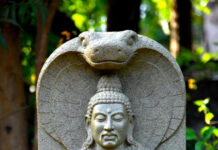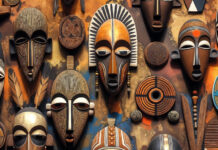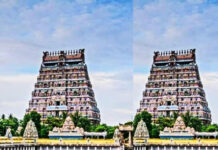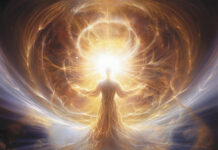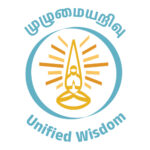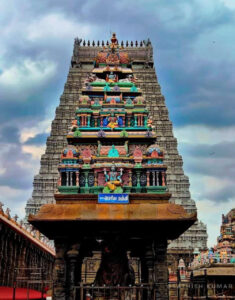
A person who identifies as a Hindu faces a problem very often. In any media platform, there will always be someone vehemently saying that Hinduism should become extinct. Even in a street corner conversation, someone might say this.
No one says such things about any other religion. There are those who believe in those religions and those who do not. Some might criticize certain beliefs of those religions. But no one fervently speaks in public that those religions should become extinct.
If asked, they will give many reasons. Let’s assume all those reasons are true. Are they saying that all other religions are necessary, but only Hinduism should become extinct?
What if Hinduism becomes extinct? I am asking this not as a Hindu, but as a global citizen.
Most of the ancient religions in the world have largely disappeared. The Greek religion and the so-called pagan religions in Europe are no longer there. The Mayan religion is gone. The Egyptian religion is gone. The Tibetan Bon religion and Japan’s Shinto religion exist for name sake. Judaism continues as a small group.
If we look at the last two thousand years of world history, we can see one thing: all nature-based religions have been intensely attacked and destroyed. Money, power, and propaganda have all been used against them. The only significant nature-based religion remaining in the world today is Hinduism.
Nature-based religions do not have a strong centralized administrative structure. They do not directly wield power. Therefore, they are continuously being destroyed. We are still witnessing those efforts of destruction that have been going on for two thousand years.
What will be the loss to world culture if the Hindu tradition becomes extinct? I explain it this way: nature-based religions are the ones that have a direct connection with prehistoric, ancient tribal cultures. The primary loss would be the severance of that connection.
Here is an example. Erecting large single stones for deceased tribal leaders is a very ancient custom. These stones are called menhirs. That period is referred to as the Megalithic civilization. It dates back thirty thousand to fifty thousand years.
Think about it, the entire history of mankind is ten thousand years at most. The Stone Age was a period when language itself was not well developed.
We are unaware of how life was during that time. These megaliths are located from England in the west to New Zealand in the east, present throughout the world. India has them everywhere.
In Tamil Nadu, there is a place called Kumarikal Palayam (near Erode), which houses one of the largest megalithic sites in India. It is still accessible today. Stone puzzle rings from the same period are found in Dharmapuri district. They are still worshiped. In my ancestral deity temple in Melangodu Yatchi Aalayam (near Kumara Koil), megaliths are present.
We do not know anything about the people who planted those stones. But there is a spiritual continuity between them and us. We unknowingly associate ourselves with them. Thus human civilization becomes monolithic. That continuity is what characterizes natural religions.
The gods we worship today, along with their forms, have evolved from unimaginable ancient times. Joseph Campbell, a scholar, collected and extensively studied the similarities among the forms of gods worldwide. American researcher, Ananda Coomaraswamy, has written numerous books about the origins of our divine forms.
Here is another example. Among the worship symbols of Stone Age tribes, there is an image of a hunter holding two hunted deer. Researchers refer to this as the “Master of Animals.” This form appears in some way in all ancient tribal cultures. It is present in Mesopotamian and Egyptian cultures.
We do not know the exact meaning of this symbol. We can interpret it as a father or deity who appears with food when one is hungry. These forms are present in the Stone Age symbols found across India. In Kudopi, a village near Ratnagiri in Maharashtra, there are rock engravings and paintings from twenty thousand years ago, dating back to the Stone Age.
At that time, no metals had been discovered. So, they used hard stones to carve into softer rocks, creating these engravings. In 2002, Satish Lalit discovered and documented these engravings. In 2019, I visited and saw them with my friends. Among the rock engravings, there is a figure resembling the hunter holding a deer.
At that time, no metals had been discovered. So, they had used hard stones to carve into softer rocks to create these engravings. In 2002, Satish Lalit discovered and documented these engravings. In 2019, I visited and saw them with my friends. Among the rock engravings, there is a figure resembling the hunter holding a deer.
The oldest Shiva Lingam we have is located at Gudimallam near Chittoor in Andhra Pradesh. Carved on that Shiva Lingam is a bas-relief sculpture of a hunter. He is depicted holding a deer he has hunted, lifting it upside down.
We can see in ancient sculptures that the figure of that hunter later transformed into the form of Shiva. Over time, the deer is depicted as standing playfully beside Shiva. Shiva is worshiped as a hunter. Among his forms, Bhikshatana and Kirata Murti, where he appears as a hunter, are significant.
Think about it! Such ancient origins! Where did this divine form come from? In the distant past, to people who didn’t even have language, this form appeared all over the world. A spiritual person would believe that this form was bestowed upon the human race by some divine power.
These forms were not created by the imagination of some sculptor. They emerged in the human mind and gradually evolved. They came into being along with the development of human culture. Human culture and these forms are inseparable. If nature-based religions become extinct, this continuity will be lost. That would be a great loss for the entire human race.
That continuity is not intellectual; it is emotional. We cannot study, research, and understand it. It must come to us through generations. That is called spiritual continuity. Now, the Egyptian religion no longer exists. Its sculptures and inscriptions are available. Numerous studies are conducted. But the feelings of that religion are no longer present. Its spirituality is no longer there.
The spirituality of the Hindu tradition continues even today. We still worship Shiva at Gudimallam. We still refer to Shiva as Pithan and Sudalai Podi Poosiyavan. This continuity is why the Hindu tradition is considered a vast cultural treasure. It is a great wealth for all of humanity.
Today’s scholars say that human wisdom and human spirituality form a single unbroken chain. Someone who understands this, even slightly, might say, “Many religions have perished due to ignorance, at least Hinduism should live.”
Jeyamohan
Translated by Geethaa Senthilkumar
